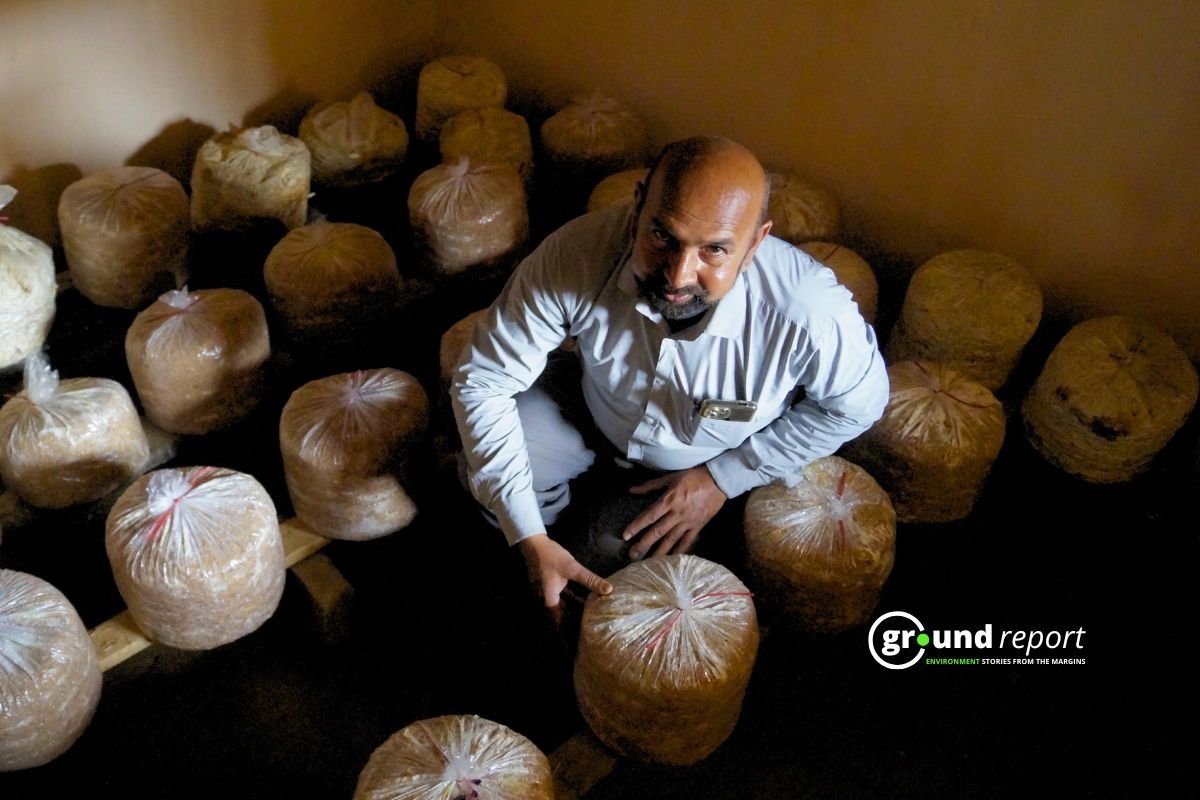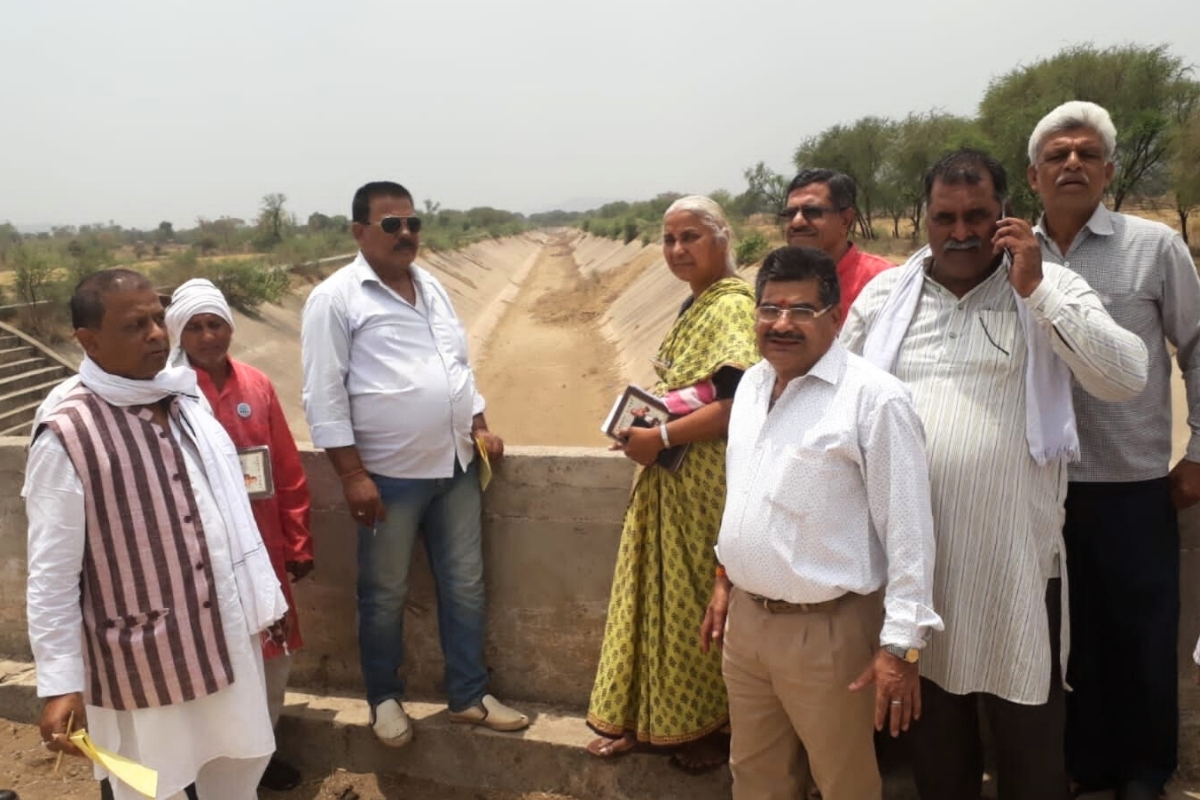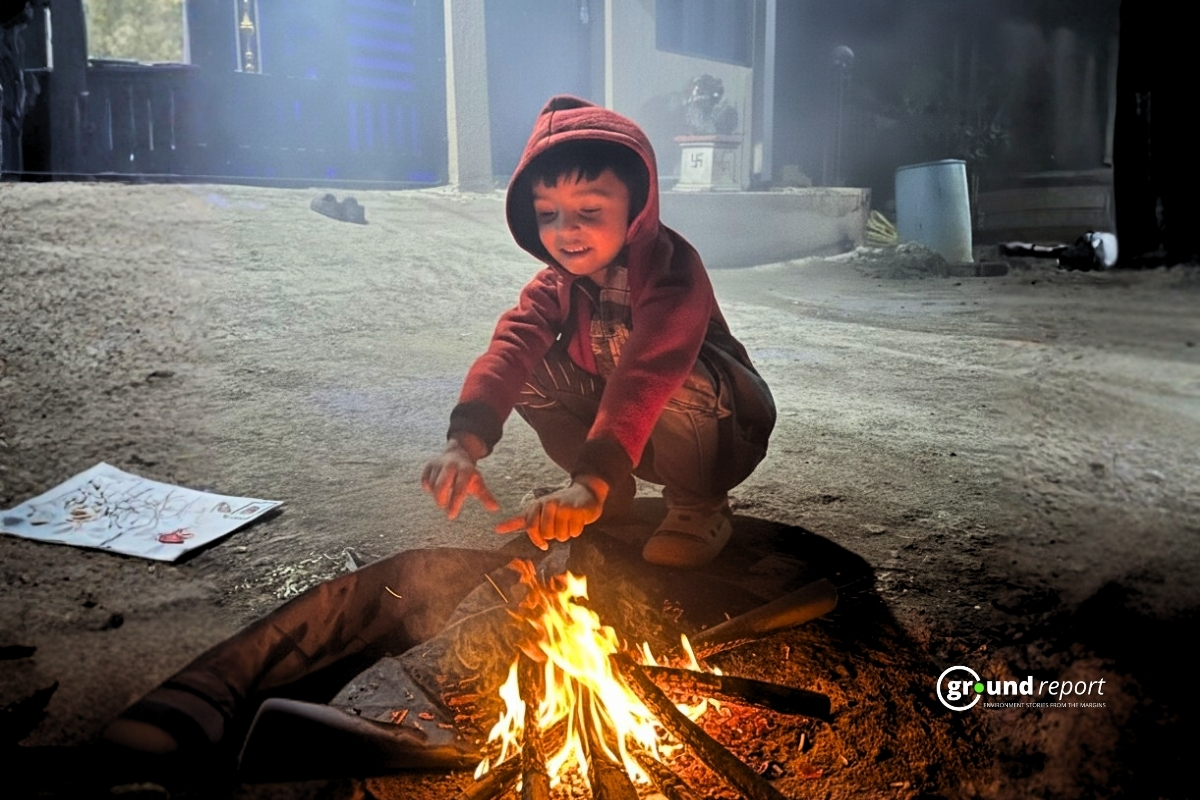On a warm February afternoon, Geeta Bai sits with a group of women near her home in Mahukalan village, Budhni tehsil, Sehore district in Madhya Pradesh, discussing the impact of contaminated water. Frustrated, she runs her fingers through her dry, damaged hair and says, “This dirty water has ruined my hair and has also affected the health and lifestyle of our people.” She blames the Trident Group’s textile factory in Budhni for polluting the groundwater, adding that wastewater from the factory has seeped into their water sources. The factory stands just 600 metres from the village.
In this Ground Report investigation, we found out how the residents of Mahukalan village are grappling with severe water contamination, with local groundwater sources allegedly polluted by a textile factory. Despite numerous reports and scientific evidence highlighting the issue, the authorities have been slow to act. With no immediate solution in sight, the villagers remain in their fight for clean drinking water—an essential and basic human right that continues to elude them.
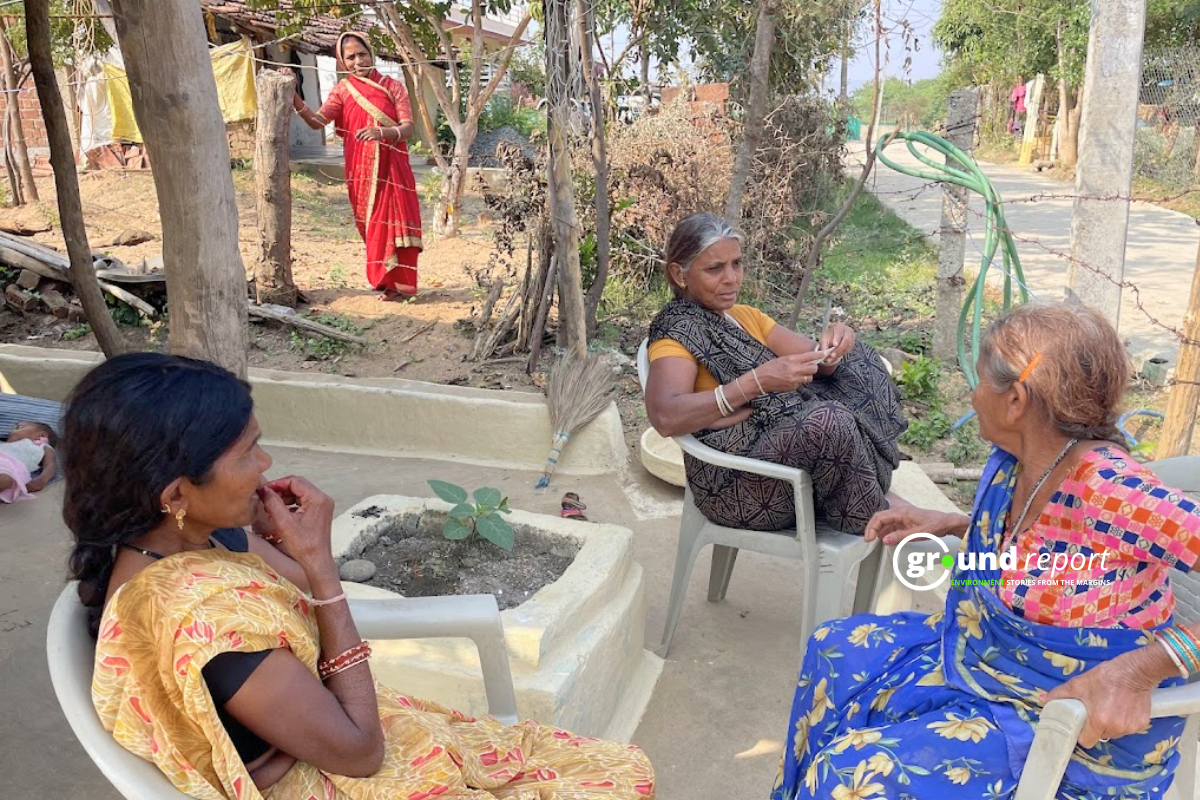
Meet the victims
Producing towels and bed sheets, the factory is located six kilometers from Narmadapuram and about one and a half kilometers from the Narmada River. As one enters the main road of Mahukalan village, a large water tank and a sealed hand pump come into view, symbolising the community’s struggle with water contamination.
As the Ground Report team enters the village, 65-year-old Gangaram Bamne, mistaking the team as government officials, shares his water woes.
He said that for the last three years there has been no solution to their groundwater contamination crisis. Glancing at his grandchildren, he says, “We have lived our lives and are managing as best we can. But this contaminated water is also destroying the future of these young children.”
Another resident of the village shared her concerns about the worsening water quality. She recalls that for the past two years, the water has been yellow and foul-smelling. In an effort to secure clean water, she took a loan of ₹2.5 lakh last year to install a borewell at her home. However, after some time, even that borewell pumps out contaminated water. The woman, who wished not to be named, shared that she suffers from a respiratory illness and blamed the polluted water in the area for her condition. She blamed the Trident factory’s wastewater discharge for the groundwater contamination.
Health issues caused by poor water quality affect people of all ages in Mahukalan. Savita Bamne, a college student in her early twenties, struggles with high blood pressure. Balancing her studies and household chores, she frequently experiences headaches and body aches, making it even more challenging to keep up with her academics. To fetch clean drinking water for her family, she travels six kilometres daily to a neighbouring village.
Conversations with the women of Mahukalan revealed that the men in their households set out each morning to fetch clean water from a village six kilometres away.
A 500-litre plastic tank sits on the roof of the resident’s house, filled with contaminated water used for bathing, washing utensils, and feeding animals. Inside her home, she keeps a separate blue drum for drinking water, which the men in her family fetch from a distant source. Once filled, the water lasts for three to four days.
c The water supply is irregular, with intervals sometimes lasting 12 to 15 days. Due to this inconsistency, the villagers cannot rely on the pipeline and are forced to travel to distant villages to fetch water for themselves.
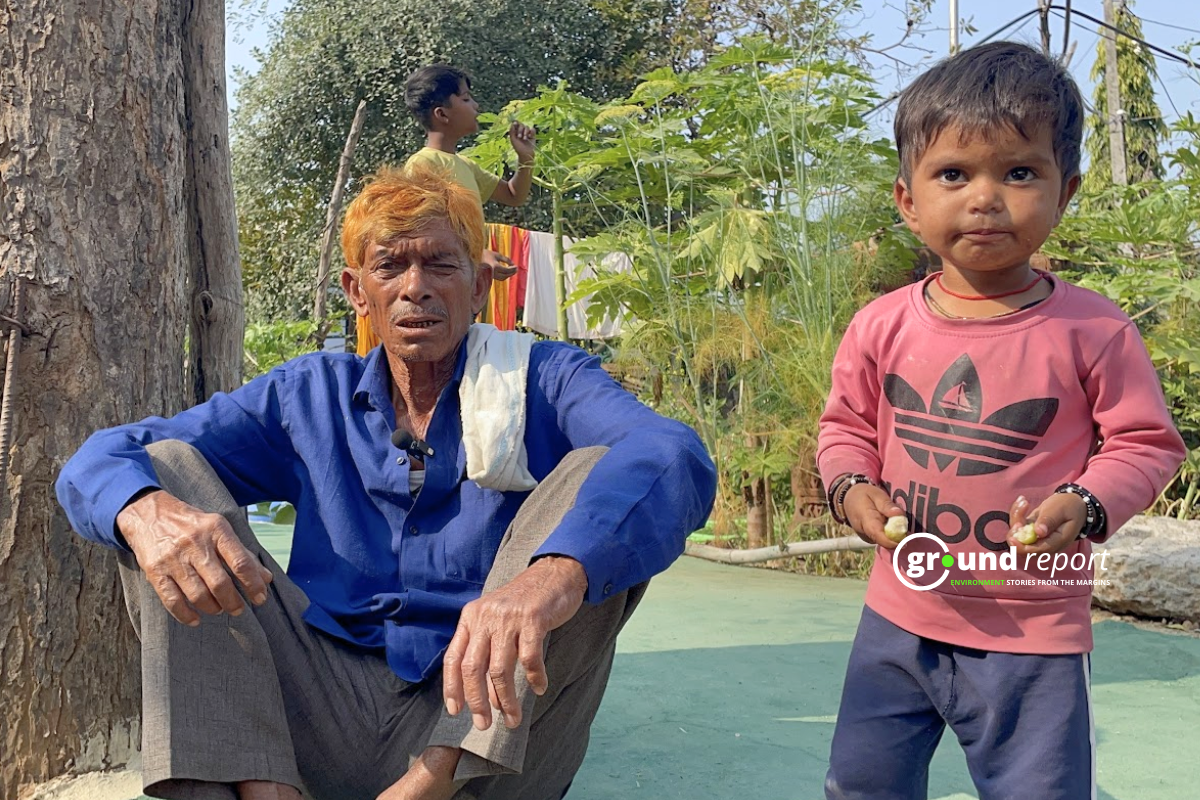
Half-hearted efforts
The water problem in Mahukalan is not new—it is well known to both the villagers and the local administrative bodies. On several occasions villagers have reported the issue to their village Sarpanch and to the highest administrative officer of the district.
Previously, senior administrative officials, such as the Sub Divisional Magistrate of Budhni and the Collector of Sehore, visited the village, where residents shared their water-related issues and sought assistance for a solution. After the collector’s visit a few months ago, the villagers were informed that their “village water is not fit for drinking.” As an immediate measure, the public hand pump– a common water source for the residents – was sealed.
Politician Vikram Mastal, who had contested in the state assembly polls as a Congress candidate from the Budhni assembly seat, had highlighted the water issue. He shared, “After our protest, the water here was tested, yet the report has never been made public.” Mastal alleged the local government was hiding the test reports.
To understand the reality of water contamination, Ground Report made several attempts to contact Dinesh Singh Tomar, the SDM of Budhni, but he didn’t respond to our phone calls. We will update the story once we get a response from him.
An exasperated Geeta Bai expresses her frustration with the repeated visits of government officials to Mahukalan that lead to no solution to their year-long water crisis. “People come to our village time and again to ask about our problems, but none of them have been solved,” she shares.
Just like Bamne Kiran, she too mistook the Ground Report team for government employees. She said,
I’m tired of speaking up. If you can guarantee a solution, then I’ll say something.
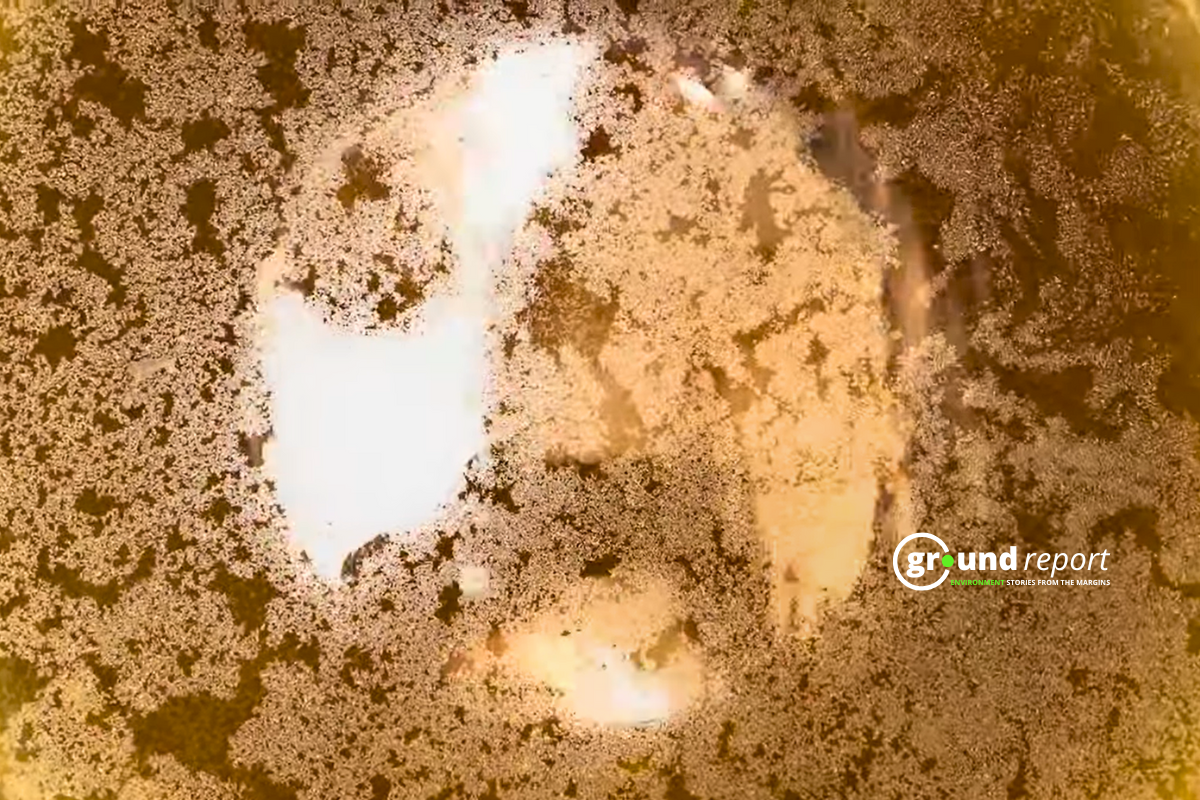
Meet the polluters
Two coal-based thermal power plants of 30 MW have been installed for energy supply in the Trident textile factory at Budhni. These plants require 6600 cubic metres of water per day. At the same time, 1440 cubic meters of wastewater are released as a result of this entire production.
According to the MPPCB (Madhya Pradesh Pollution Control Board) report, there are two local naallas (drains) near this factory. One of the drains is inside the factory, and the other is about 100 meters away from it. The plant also generates 205 tonnes of fly ash per day as solid waste. Apart from fly ash, gypsum is also extracted on a large scale. All these ingredients can pollute and even poison the water of the two local nallas.
In addition to the testimonies of locals, scientific research highlights the severity of the issue. According to the study, the risk of groundwater pollution is alarmingly high in 27.39 percent of the area, with 9.85 percent of the region facing the highest levels of contamination. Meanwhile, about 42.35 percent of the area faces a moderate risk of pollution. Only 10.52 percent of the area has a very low risk of groundwater contamination.
The groundwater research was carried out in the periphery of the factories at Narmadapuram and Budhni in 2020. The results of this research give legitimacy to the allegations made by the villagers of Mahukalan against the Trident Factory.
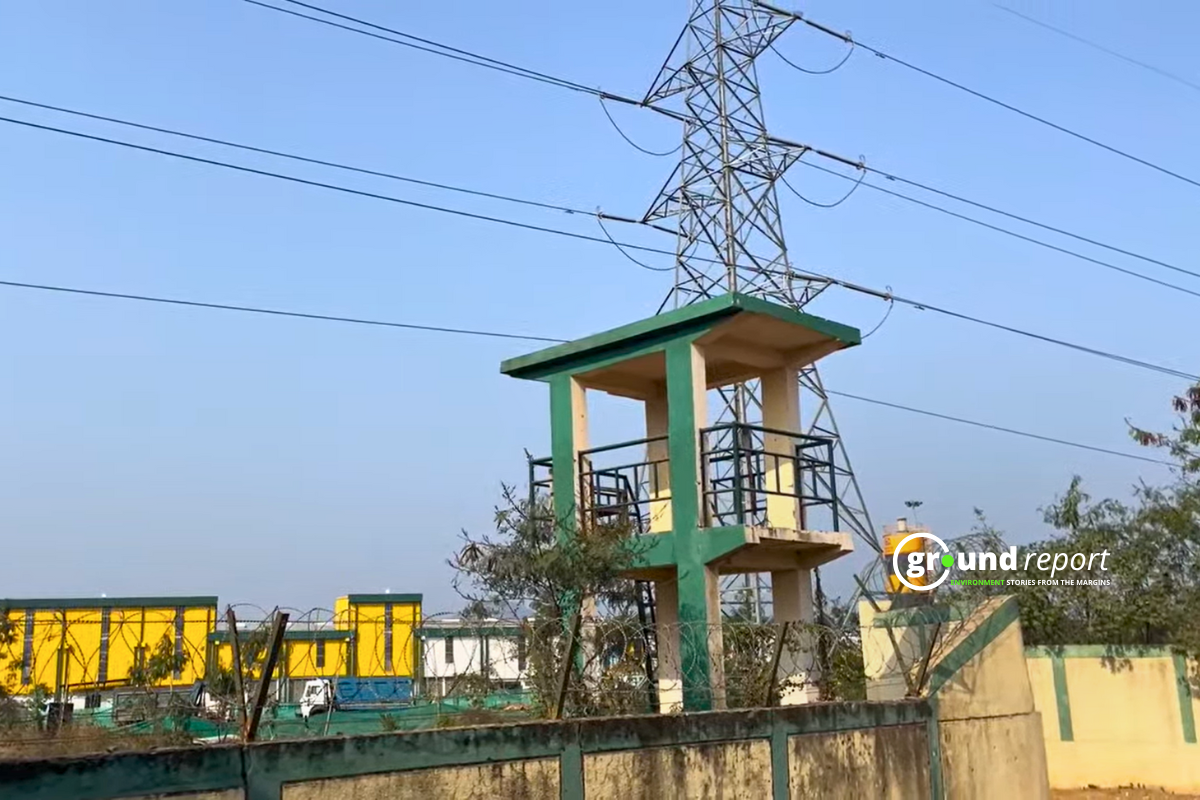
The study reveals that in the highest-risk areas, sulphide levels range from 14 to 17 milligrams per litre. In the high-risk zones, sulphide concentrations are between 11 and 14 milligrams per litre, while medium-risk areas show sulphide levels of 7 to 11 milligrams per litre.
This amount of sulphide in groundwater can be dangerous to human health. Research has shown that water containing 4 to 12 mg / l of hydrogen sulphide is toxic to the fetus. Exposure to hydrogen sulphide can cause eye, nose, and throat irritation, headache, poor memory, fatigue, and balance problems. It is not surprising that most of the women of Mahukalan are suffering from these problems.
Ground Report collected and tested a water sample from the Mahukalan village (Budhni) Borewell, revealing several alarming issues. The total dissolved solids (TDS) level is 2216 mg/L, which is much higher than the desirable limit of 500 mg/L. This indicates that the water contains too many minerals. High TDS can affect the taste and may be harmful to health if consumed regularly. The chloride level is 759.76 mg/L, exceeding the desirable limit of 250 mg/L. This makes the water taste salty and could make it unsuitable for long-term consumption. The water is not safe for drinking as it stands.
These test results back up what the residents of Mahukalan have been enduring: severely contaminated water. While the local government has responded slowly, the findings provide concrete evidence that the water quality is harmful and demands immediate action. The high levels of TDS and chloride highlight the environmental damage caused by the nearby Trident Group’s textile factory.
Ground Report emailed the Trident Group for their response to the villagers’ allegations but had not received a reply at the time of publication. We will update the article if and when they respond.
It is no secret that the textile industry is one of the major contributors to global water pollution. This industry, which includes the manufacturing of clothes, towels, and other fabric products, consumes large quantities of water and releases hazardous chemicals into water bodies. Similarly, despite scientific evidence of contaminated water in Mahukalan, Trident Textile has largely turned a blind eye to the crisis. The company’s official website highlights several public-interest CSR (Corporate Social Responsibility) initiatives in Sehore, particularly in the Budhni area. On its homepage, the company claims to use water sourced through the 5R technology (Reduce, Reuse, Recycle, Recover, and Restore).
If we look at the annual report of Trident for 2023-24, the presence of ‘sustainability’ is seen strongly in the company’s motto. In this report, the company claims that there is zero liquid discharge at the Budhni factory. The report states that the company has maintained a zero liquid discharge facility since its inception, and its operations have saved more than 6 million litres of fresh water every day.
The company further claims that its plant recovers biodegradable wastewater with the help of a biological plant. Also, the factory has adequate arrangements to treat contaminated water. But all these claims made in the report seem far from the ground reality.
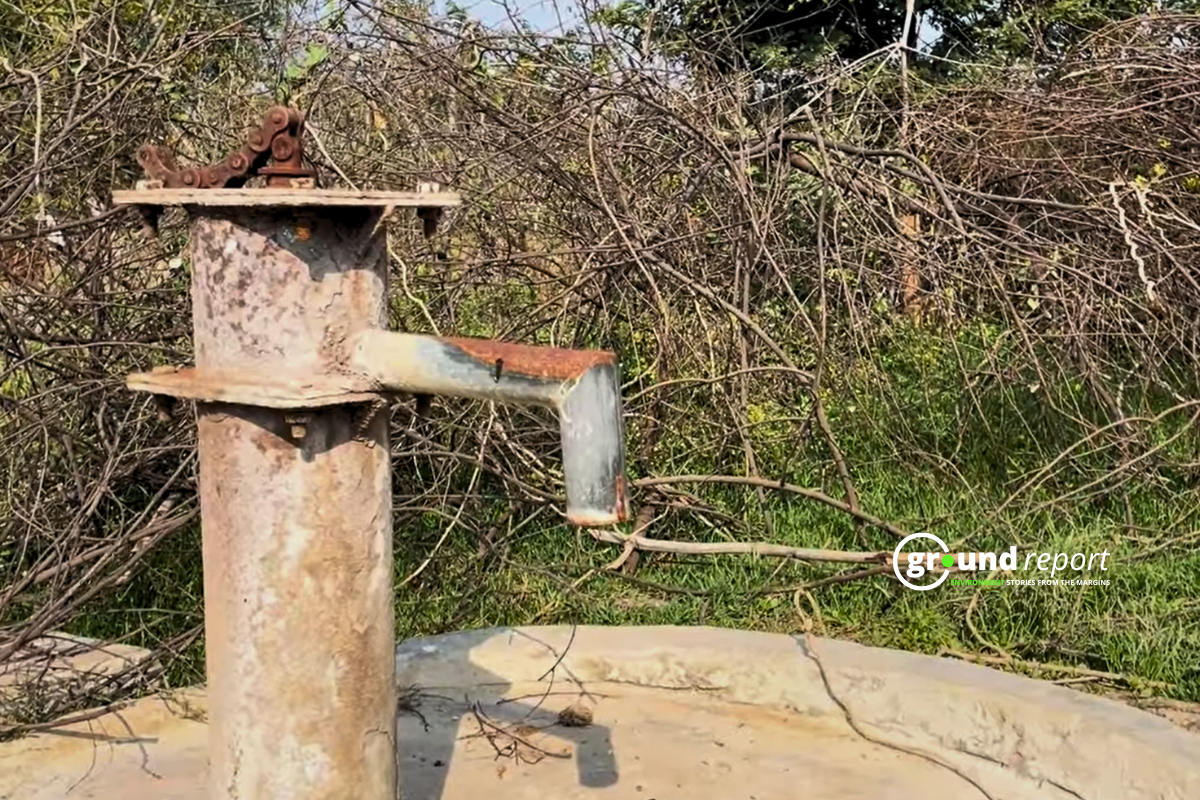
New normal of Mahukalan
The normalisation of the crisis is evident in Muhakalan. The Trident Group’s logo bears the phrase ‘Different is normal’, prompting a discussion about the plight of 25 households in Mahukalan, situated right next to the factory, which are struggling for their basic right to clean drinking water. Is this the new normal? The residents ask.
Government officials appeared unaware of the plight of the 25 families. When the Ground Report team raised the issue at the Collectorate’s office, officials seemed uninformed about the water contamination. The Additional District Magistrate, the District Panchayat CEO, and the District Collector were all unfamiliar with the matter, despite it persisting for years. The Sehore Collector
Balaguru K. assured the reporter that he would look into the issue, but a month has passed with no action taken.
Edited by Diwash Gahatraj
Support us to keep independent environmental journalism alive in India.
Keep Reading
Rajgarh’s development dilemma: growth at the cost of green cover
What is pesticide selling—protection from pests, and vulnerability to accidental poisoning
Mahseer saviors struggle as conservation funds dry up
Fighting for breath: Khargone’s cotton workers battle Byssinosis
Follow Ground Report on X, Instagram and Facebook for environmental and underreported stories from the margins. Give us feedback on our email id greport2018@gmail.com.
Don’t forget to Subscribe to our weekly newsletter, Join our community on WhatsApp, and Follow our YouTube Channel


